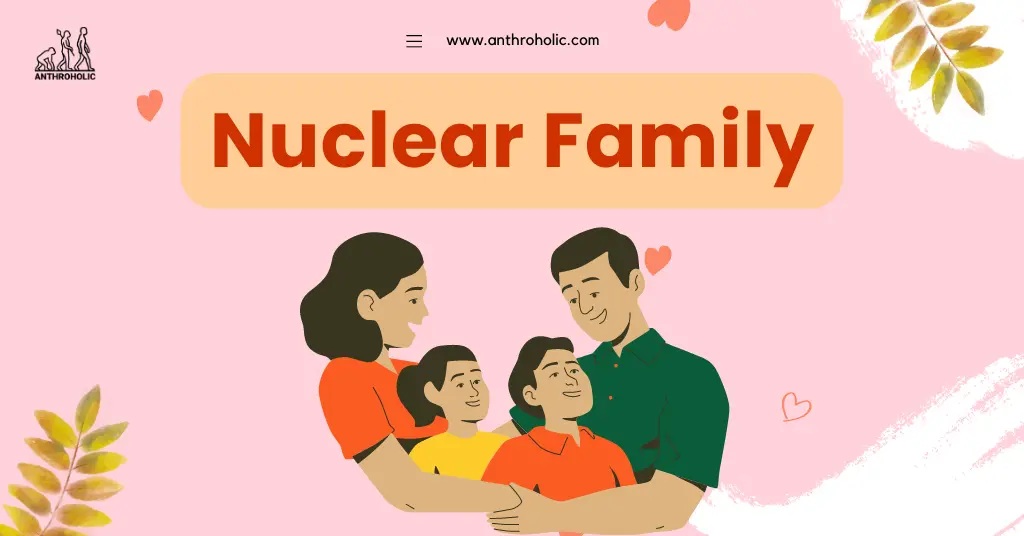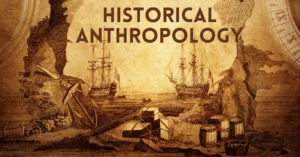AI Answer Evaluation Platform Live Now. Try Free Answer Evaluation Now
Nuclear Family
The term “nuclear family” refers to a family group consisting of two adults and their children. It’s considered the basic unit of the modern family structure. In this article, we delve deep into the concept of the nuclear family from a cultural anthropology perspective, exploring its origin, advantages and disadvantages, and its impact on society.

Origin of Nuclear Family
The concept of the nuclear family was not the dominant family structure in most cultures until the Industrial Revolution in the late 18th century. This shift was mainly due to urbanization and the necessity for family units to be more mobile in order to seek employment opportunities [1].
- Pre-Industrial Nuclear Family: Before the Industrial Revolution, extended families, which included grandparents, aunts, uncles, and cousins living in the same household, were the norm. There were cases of nuclear families existing within these extended families, but they were not autonomous units as we understand them today [2].
- Post-Industrial Nuclear Family: With the advent of the Industrial Revolution, urban living and mobility became essential. The small and self-sufficient nuclear family unit thus became more practical and gradually turned into the dominant family structure [2].
Advantages and Disadvantages of Nuclear Family
As with any social structure, the nuclear family presents both advantages and disadvantages.
Advantages
Some of the advantages include:
- Privacy: Nuclear families enjoy more privacy compared to extended families [3].
- Independence: It promotes independence and encourages individuals to take on roles and responsibilities [3].
- Mobility: Smaller family units can relocate more easily for job opportunities [2].
Disadvantages
Some of the disadvantages include:
- Limited support: The lack of immediate familial support might be challenging in times of crises [4].
- Isolation: Nuclear families may face increased isolation and dependency on non-familial social structures for emotional support [4].
Impact of Nuclear Family on Society
The nuclear family has both positive and negative impacts on society. It influences various aspects of social life, such as childhood development, gender roles, and societal norms.
- Childhood Development: Nuclear families can offer a more concentrated environment for the development of children, providing more focused attention and resources. However, they can also limit exposure to a diversity of role models, as children primarily interact with their parents [5].
- Gender Roles: In many traditional nuclear families, gender roles are often clearly delineated, with males generally as breadwinners and females as homemakers. Although these roles have evolved over time, the nuclear family structure continues to influence gender dynamics within the family [6].
- Societal Norms: The nuclear family structure heavily impacts societal norms, especially in Western cultures. It dictates the expected progression of adulthood – from leaving the parental home, to marriage, and the subsequent establishment of a new nuclear family [7].
The Nuclear Family in Different Cultures
The concept of a nuclear family is not unique to Western societies and can be found in various forms across different cultures. However, its manifestation and relevance can differ significantly based on cultural norms, traditions, and socioeconomic conditions.
- Asian Societies: In many Asian societies, such as China and India, the tradition has typically leaned towards extended family structures. Nonetheless, rapid urbanization and the influence of Western culture are leading to a rise in nuclear families [8].
- African Societies: African societies often have complex familial structures influenced by tribal traditions and customs. The traditional African family tends to be extensive, but again, modernization and urbanization are leading to a gradual shift towards nuclear families [9].
- Indigenous Cultures: In many indigenous cultures, the concept of family extends beyond the nuclear and even beyond the extended family, often encompassing the entire community. These societies emphasize collective upbringing and responsibility for all community members [10].
Table 1: Nuclear Family in Different Cultures
| Culture | Traditional Structure | Modern Shift |
|---|---|---|
| Asian | Extended family | Towards nuclear |
| African | Extended family | Towards nuclear |
| Indigenous | Community | Varied |
Evolution of Nuclear Family in the 21st Century
The nuclear family is not a static concept. It continues to evolve and adapt to societal changes.
- Single-Parent Families: Increasing divorce rates and social acceptance of unwed parenthood have led to a rise in single-parent families. These families consist of one parent and their dependent children, which is a deviation from the traditional two-parent nuclear family structure [11].
- Same-Sex Families: With the legalization of same-sex marriage in many parts of the world, same-sex couples raising children are also a form of nuclear family. This represents a shift from traditional gender roles within the nuclear family [12].
- Childless Families: More couples are choosing not to have children, often due to lifestyle choices or socioeconomic factors. These childless nuclear families challenge the conventional idea that a nuclear family must include children [13].
Conclusion
The nuclear family is a social construct that has been shaped by economic and cultural shifts. It continues to evolve and remains a critical aspect of societal structure. Its influences and implications are far-reaching, affecting childhood development, gender roles, and societal norms. As cultural anthropologists, the continual observation and understanding of such family structures is crucial in the broader interpretation of societal evolution.
References
[1] Scott, J. & Marshall, G. (2005). A Dictionary of Sociology. Oxford University Press.
[2] Flandrin, J.L. (1979). Families in Former Times: Kinship, Household and Sexuality. Cambridge University Press.
[3] Bell, D. & Richard, B. (1953). The Social System: The Major Exposition of the Author’s Conceptual Scheme for the Analysis of the Dynamics of the Social System. Free Press.
[4] Putney, S. & Bengtson, V.L. (2003). Handbook of Theories of Aging. Springer Publishing.
[5] Parke, R.D. & Buriel, R. (2006). Socialization in the Family: Ethnic and Ecological Perspectives. Handbook of Child Psychology.
[6] Risman, B.J. (1998). Gender Vertigo: American Families in Transition. Yale University Press.
[7] Cherlin, A. (2009). The Marriage-Go-Round: The State of Marriage and the Family in America Today. Vintage.
[8] Thorat, Y.S.P. (2019). Changing Structure of Rural Economy of India Implications for Employment and Growth. Routledge.
[9] Nukunya, G.K. (2003). Tradition and Change in Ghana: An Introduction to Sociology. University of Ghana.
[10] McCubbin, H., Thompson, E., & McCubbin, M. (2006). Family Measures: Stress, Coping, and Resiliency: Inventories for Research and Practice. Kamehameha Schools.
[11] Amato, P.R. (2000). The Consequences of Divorce for Adults and Children. Journal of Marriage and Family.
[12] Goldberg, A.E. (2010). Lesbian and Gay Parents and Their Children: Research on the Family Life Cycle. American Psychological Association.
[13] Gillespie, R. (2003). Childfree and Sterilized: Women’s Decisions and Medical Responses. Cassell.




